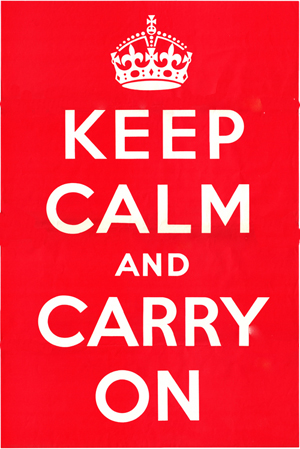THE British Library (it’s fabulous; do go) is showing Propaganda: Power and Persuasion.
Propaganda: Power and Persuasion is the first exhibition to explore international state propaganda from the 20th and 21st centuries. From the eye-opening to the mind-boggling, from the beautiful to the surprising, posters, films, cartoons, sounds and texts reveal the myriad ways that states try to influence and persuade their citizens.
Christie Davies says humour helps (and, of course, the Germans don’t have one (see World War 2 propaganda):
A central characteristic of the British propaganda in the exhibition is its extensive and successful use of humor, often achieved by giving official employment to professional cartoonists such as Fougasse. Some of the visitors laughed out loud at the British Ministry of Propaganda film London’s New Version of the Lambeth Walk performed by the Nazi Ballet (1941). The producer, Charles A. Ridley, simply took Lenny Riefenstahl’s Nazi propaganda film The Triumph of the Will (1934) and edited it so that the marchers, drummers, and goose-steppers of a Nuremberg rally sometimes move too quickly and sometimes move backwards and forwards. They no longer look menacing or impressive, but idiotic. It was all done to the then popular tune “The Lambeth Walk” that accompanied a jaunty walking dance popular in Britain and later in America. The actual music used was from the 1937 musicalMe and my Girl. Even Hitler and his comrades salute in time to it. On seeing the orderly precision of a Nazi rally reduced to a dance that had earlier been condemned by them as “Jewish mischief and animalistic hopping,” Goebbels is said to have been so angry that he ran out of the projection room kicking chairs and shouting obscenities. This short film without words was distributed to newsreel theaters throughout the world. A simple but effective technique for debunking power.
And what of this famous message?
I’m thinking of the famous Ministry of Information poster ‘Keep Calm and Carry On.’ This image was never used for its intended purpose. It was originally designed to be distributed should Nazi forces have invaded England.
The sentiment behind this message is open to questioning. Would the British public really be encouraged to ‘keep calm and carry on’ had Hitler’s forces reached England? Would we really want to ‘keep calm and carry on’ as fascism took hold of Europe?
Keep-calm-and-carry-on-scan
Above: Keep Calm and Carry On. By original poster by UK Government, enhancements, conversion to PNG by oaktree_b, via Wikimedia Commons. Copyright and download here. [Public domain]To my mind at least the answer is no. When atrocities are occurring all around you, when ethics are no longer a matter of concern, when peoples lives and existence are at stake, the last thing I would like to see happen is for everyone to ‘keep calm and carry on’. Surely if there are ever times for people to rise up and take action, it would be under such conditions.
The question I’m trying to raise here, perhaps a little clumsily, is regarding the role of non-action, of ignoring, of not knowing in certain power relations.
Keep calm and do nothing?
Would you like to support Flashbak?
Please consider making a donation to our site. We don't want to rely on ads to bring you the best of visual culture. You can also support us by signing up to our Mailing List. And you can also follow us on Facebook, Instagram and Twitter. For great art and culture delivered to your door, visit our shop.




